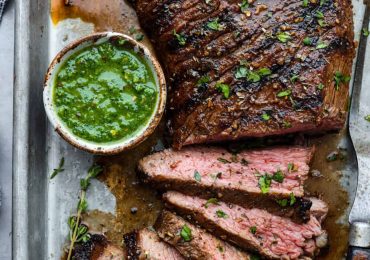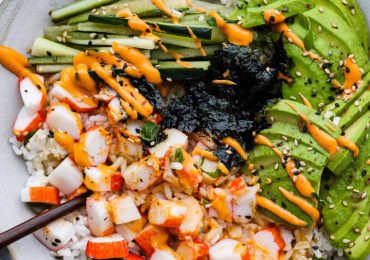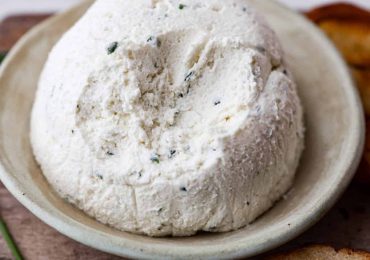
CHICAGO — Sustainable has become a popular descriptor for food and beverage marketers. While not regulated, it is being used often, and it is only a matter of time before consumers and regulators start asking for data to support sustainability statements and claims. Manufacturers must do their due diligence and be ready to answer questions.
Consumers have seen how world events, including the COVID-19 pandemic and the war between Ukraine and Russia, may impact their lives at home. Food and beverage manufacturers are now talking in terms of “global food systems,” which is the collaboration of all steps involved in food creation, from seed and livestock genetics to waste management.
“It is a team sport,” said Jim Andrew, chief sustainability officer, PepsiCo, Inc., Purchase, NY.
Food systems are central to the global economy, representing $13 trillion of gross domestic product and 40% of all jobs, according to Tania Strauss, head of food systems for the World Economic Forum, Geneva. A global population of 9.8 billion by 2050 will demand 70% more food than is consumed today. Feeding the expanded population nutritiously and sustainably will require substantial changes to the global food system, which accounts for a third of global greenhouse gas emissions, a contributor to climate change.
Sourcing sustainable ingredients will play a role in modifying global food systems. There’s also opportunity to differentiate products in the marketplace through sustainable ingredient selection.
“Food scientists need new sustainable tools in their toolbox to create delicious new products that make a positive impact on the environment,” said Jaime Reeves, executive vice president of product development and commercialization, Mattson Co., Foster City, Calif. “It’s all about better-for-the-planet ingredients. This includes upcycling, regenerative agriculture, lower carbon emissions, lower water usage and more.”
What is sustainable?
While not legally defined, there is a generally recognized understanding of what qualifies as a sustainable ingredient. It is those raw materials produced and transported in a way that limits contribution to global warming. Sustainable ingredients also should help protect biodiversity and ecosystems. The definition suggests the ingredients are grown and produced in a manner that respects natural resources and the living world.
Soil contains organic and inorganic matter, including minerals, microorganisms, earthworms and other essential elements needed to sustain plant growth. It is the foundation of sustainable global food systems. Good soil is rich in nutrients that are consumed by humans and livestock. The latter, in turn, convert those nutrients into foods that humans eat, namely eggs, meat and dairy products.
Unfortunately, soils in some regions around the world have been mismanaged. Research shows soils in some regions have lost 50% to 70% of their original carbon stock, which has mostly been released into the atmosphere as carbon dioxide, contributing to climate change, said Kristy Lewis, founder and chief executive officer, Quinn, Boulder, Colo.
Regenerative agriculture practices have been shown to sequester carbon from the atmosphere. Regenerative agriculture not only pulls carbon out of the atmosphere and puts it back into the soil where plants thrive on it, it also may improve crop yields, naturally reduce pests and increase biodiversity.
Fewer than 1% of US farms are certified organic and even less are certified regenerative organic, said Ms. Lewis. Companies, such as Quinn, are working with farmers to improve soil health. They purchase raw materials from regenerative farms and communicate the choice to consumers to differentiate.
These are important efforts, but consumers also want to see social concerns included in the sourcing of ingredients. Many believe the raw materials should be produced under decent working conditions and the workers paid fair wages. Consumers are willing to pay for this, too.
Forty-six percent of Americans said knowing workers who produce, distribute or serve the food they eat are treated in a fair and equitable way is an important factor in their purchase decisions, according to the 2023 Food and Health Survey from the International Food Information Council, Washington. Food labels and manufacturers’ websites are the go-to places for information about whether products are produced in ways that are committed to the fair and equitable treatment of workers.
Using stories to support claims
Sarilla, an organic non-alcoholic beverage brand, is described by its founder, Sara Stender Delaney, as a “product with purpose and part of a movement to inspire and help you tap back into your true self.”
“When you purchase Sarilla, you are truly making an impact,” Ms. Stender Delaney said. “Sarilla is manufactured in the US and made with Rwandan tea leaves and functional botanicals grown using regenerative agriculture practices. Through our foundation partner — Africa Healing Exchange — we provide localized, sustainable solutions to deep-rooted challenges that have made it difficult for individuals to live their fullest potential.
“Most of our ingredients are regenerative, and our goal is to be 100% by 2025. We select the finest functional herbs in their most natural state. They are minimally processed and grown in biodiverse soil without pesticides. No syrups or powders here, and you will never see a ‘flavor’ in our recipe. We use organic fruits to finish off an elegant, natural beverage that benefits your mind, body and the planet.”
Mars, Inc., McLean, Va., plans to capitalize on consumer interest in products manufactured sustainably. The vanilla used to flavor Dove ice cream bars is sourced from farmers participating in the Livelihoods Fund for Family Farming, an effort focused on improving the lives of vanilla farmers in Madagascar.
“At Mars, we see an opportunity to grow our ice cream business not only in North America, but around the globe,” said Anton Vincent, president of Mars Wrigley North America and the head of Mars Ice Cream globally.
Darien, Conn.-based Aloha now offers Kona Bar, a special-edition product that supports sustainable agriculture in Hawaii while giving back to the next-generation of environmental stewards. The bar features responsibly sourced ingredients including Kona coffee and Hawaii-grown macadamia nuts. It is also the first commercial launch of Ponova oil in a food product, a sustainable plant-based oil made from the beans of pongamia trees on Oahu, according to the company.
“As we grow, we’re committed to finding new and innovative ways to use our business as a force for good,” said Brad Charron, CEO. “This is a critical step in delivering on our mission to create delicious and nutritious food while making a positive impact on the world.”
Using “intentionally sourced real ingredients” was the mantra behind Ms. Lewis’ founding of natural snack food company Quinn in 2010. The brand’s recently introduced “pizzeria” pretzel nuggets, for example, are formulated with a blend of lentil and sorghum flour. The latter is a gluten-free ancient grain that is better for the environment due to its drought-tolerant properties. The snack is seasoned with sun-dried tomato powder.
Sustainable packaging also is a priority for Ms. Lewis. The company developed microwave popcorn packaged in a patented bag made of compostable paper with no chemical or plastic coatings.
In March, Quinn announced its participation in the Soil Carbon Initiative (SCI), a program from non-profit Green America. Dedicated to the regenerative agriculture transition process, SCI incentivizes farmers to improve soil health, biodiversity, climate resiliency and farm economics. The SCI and Quinn are working together to quantify the impacts of their work with farmers transitioning to regenerative agriculture.
Since 2020, Quinn has worked with a Nebraska sorghum grower as he transitions to regenerative practices. Sorghum is a nutrient-dense crop that has been a crucial ingredient for Quinn’s supply chain since the company debuted whole grain, gluten-free pretzels in 2016. Sorghum requires 30% less water than other grains, and an estimated 91% of sorghum acres are rain-fed, saving 1.5 trillion gallons of irrigation water per year, according to the United Sorghum Checkoff Program.
The upside of upcycling
Upcycling is another attribute of many sustainable ingredients. The Supplant Co., New York, produces sustainable ingredients from the “forgotten half of the harvest,” according to the company. The company uses the fiber-rich parts of crops that don’t typically make their way into food to create sugars from fiber, which are said to cook, bake and caramelize like traditional sugar. The ingredient has fewer calories than cane sugar, a low-glycemic response and the benefits of a prebiotic.
In addition to selling the “sugars from fiber” ingredient direct to food and beverage manufacturers, the company produces chocolate chips for industrial sale and direct-to-consumer chocolate bars made with the ingredient.
“Expanding our offering beyond a raw ingredient to inclusions and consumer products furthers our mission to create a whole new category of ‘sugars from fiber’ and ultimately reduce the demand for cane sugar while providing a solution to agricultural food waste,” said Tom Simmons, founder and CEO.
The company also has a new “grain and stalk flour,” which is made from both the grain and stalk of the wheat plant, with the latter usually going to ruminant animal feed. The flour performs in baked goods, pasta and other flour-based products, maintaining texture and taste while offering fewer calories and more than six times the fiber of regular wheat flour, the company said.
For Finnish company SuperGround, upcycling comes in the form of converting nutrient-dense chicken bones and fish bones, skin and scales into a powder ingredient that may be used to formulate nuggets, sausages, kebabs, patties, cold cuts, soups and more. The ingredient may replace 20% to 40% of a formulation’s total mass from poultry or fish without any impact on sensory properties, according to the company.
With fish, depending on the species, as much as 60% of its net weight may previously not be used as human food. The number of these unused parts is especially high with smaller fish species, such as perch. Using hard tissues, such as fish bones, skin and scales, also increases the nutritional value of fish products, since they include a higher volume of vitamins, calcium and good fats, compared to fish fillets.
“We want to encourage and enable companies to utilize the full potential of fish and all of its precious and nutritious raw materials, which previously could not have been used as food,” said Santtu Vekkeli, founder and chief innovator. “Now, the fish industry can simultaneously improve its efficiency and sustainability, while consumers see the fish products they know and love becoming more nutritious, tasty and sustainable. This way, customers can make more sustainable choices without changing their dietary habits.”








